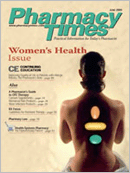Publication
Article
Pharmacy Times
A Pharmacist's Guide to OTC Therapy: Vaginal Yeast Infection Products
Author(s):
Is it a yeast infection or a bacterial infection? Vaginal bacterial infections cannot be treated with OTC products, but there are OTC options for yeast infections. Also known as candidiasis, yeast infections are caused by a yeast-like fungus called Candida albicans. Some traces of Candida are present in the body. When an imbalance occurs, however, Candida can multiply, and the symptoms of candidiasis appear. For instance, many patients who are treated with antibiotics ultimately will develop a yeast infection. The Centers for Disease Control and Prevention reports that ~75% of all women will have =1 vaginal yeast infections in their lifetime.
Symptoms of Yeast Infections
Common symptoms of yeast infections include the following:
- Vaginal itching and irritation
- Thick, white, and odorless discharge (resembling cottage cheese)
- Redness or irritation of the vulva area
- Discomfort or pain during or after sexual intercourse
- Discomfort or pain with urination
Although these infections are easily treated, it is important to visit a physician if a patient has never been treated for this condition. Many vaginal problems that can manifest with the same symptoms as a yeast infection must be ruled out-eg, sexually transmitted infections such as a chlamydia infection, gonorrhea, or trichomoniasis.
Causes or Predisposing Factors
Lowered immunity is the main cause of yeast infections, as a result of not getting enough rest and too much stress, or as a result of illness. Pregnancy and certain disease states (such as uncontrolled diabetes), as well as certain medications (antibiotics, oral contraceptives, and steroids) can lead to yeast infections as well. Clothing that is too tight or made of certain materials such as nylon can increase moisture and warmth in the vaginal area where yeast tends to thrive.
Treatment Options
Vaginal yeast infections can be effectively treated with OTC imidazole products (creams, ointments, or suppositories) that are used vaginally. These products include the active ingredients clotrimazole, miconazole, and tioconazole and exert their effect by basically breaking down the cell wall of the Candida organism until it dissolves. The choice of product is based primarily on a patient's preference (Table). Symptoms usually improve within a few days, although it is recommended that a patient adhere to the directions concerning the length of therapy, even through the menstrual cycle.
These products are meant to treat subsequent infections and not first episodes. Some of these medications may cause vaginal stinging, burning, or irritation. It is not necessary to treat a sex partner because most vaginal yeast infections are not sexually transmitted. If a male partner, however, shows symptoms such as irritation or itching, an antifungal cream may be in order.







